Did you know that India is home to seven volcanoes? Interestingly, two of these volcanoes are located right in Haryana. Despite having such unique geological sites, Haryana’s tourism department has largely overlooked them. Sadly, these remarkable locations often remain neglected and under-promoted. Take the hilltop fort of Madhogarh or the fort of Mahendergarh for example. These historic places are slowly fading away, with little to no restoration work being done to preserve them. One such hidden gem is near my hometown, Dhosi Hill. This extinct volcano, millions of years old, holds great geological and historical significance but remains largely unrecognized.
It is a shame that these incredible sites do not receive the attention they deserve, as they could offer enriching experiences for tourists and history enthusiasts alike.
A place that is an extinct volcano and millions of years old. I didn’t even know about it until I did some homework the day before I planned to visit. This is ironic, both on my part and on the government’s, for not doing anything to preserve such sites. Dhosi Hill is a great historic and tourist location in Haryana. I had heard the name many times but never knew the rich history behind it.
Dhosi Hill is an ecosystem in itself, yet it is neglected. When I spoke with a caretaker at the temple on the hill, he told me that funds are allotted but never reach the site. I tried to uncover the story behind this and searched for the facts when I made my first visit to Dhosi Hill, Narnaul.

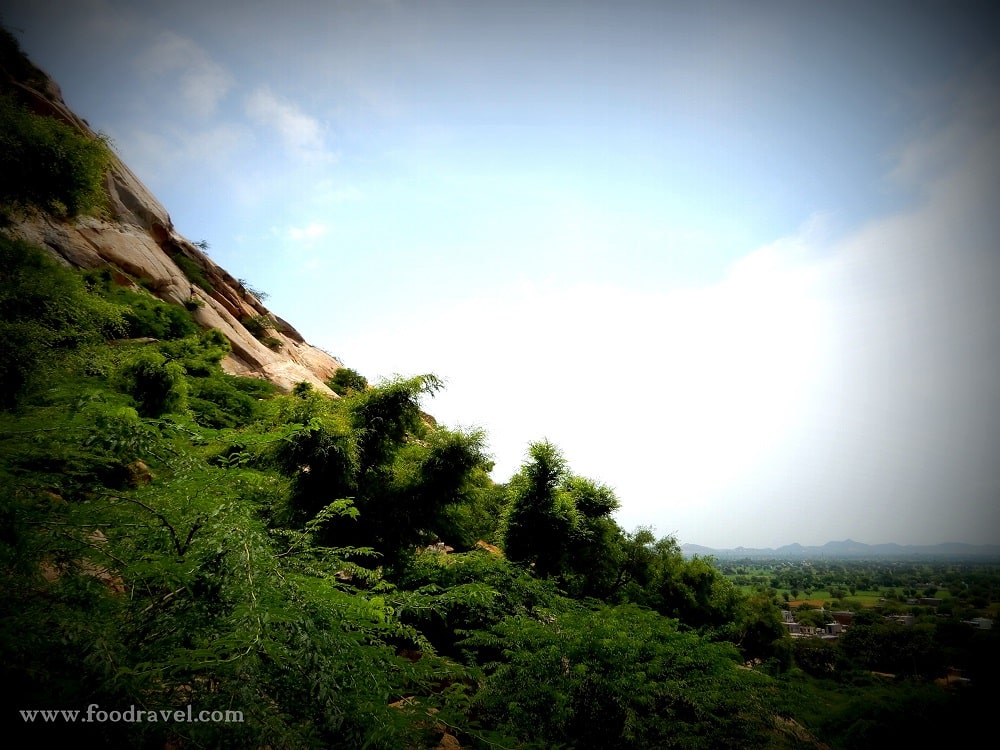


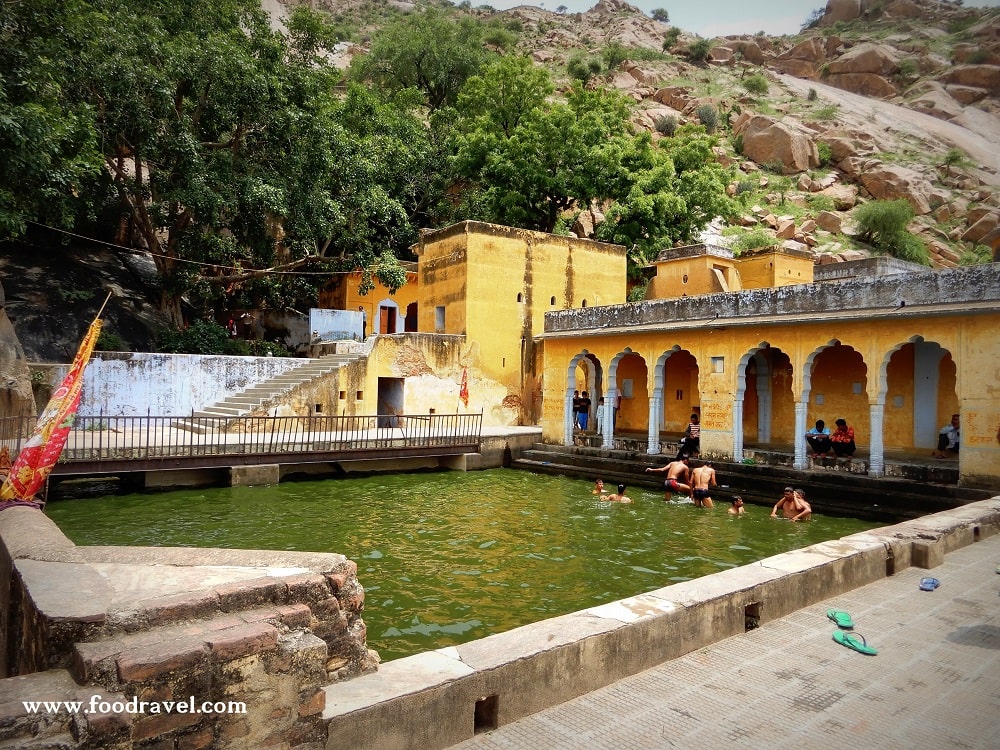


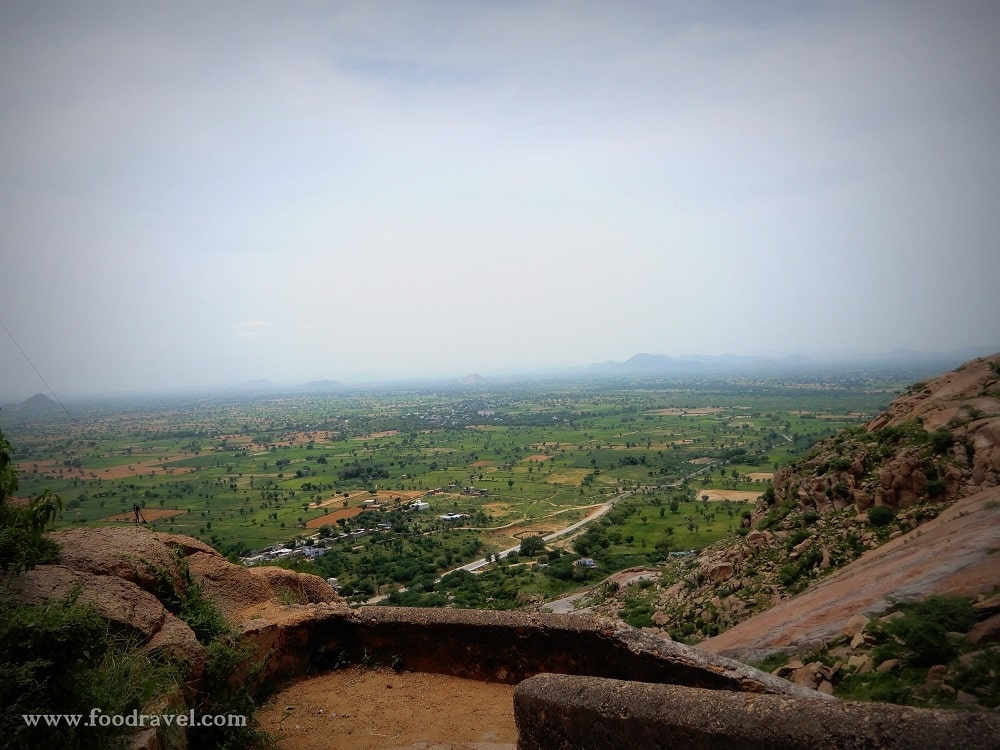
Geology of Dhosi Hill: An Ancient Extinct Volcano
Dhosi Hill is a Precambrian extinct volcano located at the northwest end of the Aravalli mountain range. It formed approximately 732 million years ago during intense volcanic activity associated with the Malani igneous province. Geologically, it is part of the Malani Igneous Suite, a group of felsic to intermediate volcanic and plutonic rocks in the region.
The hill exhibits a classic volcanic structure with a prominent conical shape and a crater-like depression at the summit, indicative of an ancient volcanic vent. The rock composition predominantly includes rhyolite and granite, formed from magma that cooled slowly beneath the earth’s surface and from surface lava flows.
Volcanic features include solidified lava flows, volcanic tuffs, and pyroclastic deposits, which provide evidence of explosive volcanic eruptions in the region’s geologic past. The geochemistry of the rocks suggests high silica content, consistent with felsic volcanism. The thermal history reconstructed from these rocks helps geologists understand the magmatic evolution and tectonic processes of the Precambrian era in this part of India.
Stratigraphically, Dhosi Hill lies within a sequence of volcanic and plutonic rocks that are overlain and interbedded with metasedimentary formations. The presence of volcanic breccias and lava pillows supports the interpretation of an ancient volcanic origin.
Structurally, the hill shows evidence of minor faulting and fracturing caused by tectonic stresses over millions of years, but the main volcanic morphology remains intact, making Dhosi Hill a rare example of an ancient volcanic landform preserved in the Indian subcontinent.
Where is Dhosi Hill located & how to reach there?
Dhosi Hill is located at the northwest end of the Aravalli mountain range, right on the border between the Indian states of Haryana and Rajasthan. It stands near the city of Narnaul in Mahendragarh district, Haryana. The hill is surrounded by three villages at its foothills: Dhosi village to the west in Rajasthan’s Jhunjhunu district, and Kultajpur and Thana villages in Haryana. Kultajpur village, which lies on the foothill of Dhosi Hill, is about 5 kilometers from Narnaul city.
Narnaul itself is well connected by road and rail. It sits at an intersection of several national highways, including NH-11, NH-148B, and the Trans-Haryana Expressway, making it accessible from Delhi (about 150 km), Jaipur (about 160 km), and Alwar (about 100 km). The nearest major airport is Indira Gandhi International Airport in Delhi.
To reach Dhosi Hill, the typical route is:
First, travel to Narnaul by train, bus, or car from Delhi or nearby cities.
From Narnaul bus stand or railway station, you can hire an auto-rickshaw, taxi, or local transport to take you to the foothill villages, especially Kultajpur or Dhosi village. The drive from Narnaul to the foothills takes about 15 to 20 minutes.
From the foothill, visitors begin the trek up Dhosi Hill via well-defined paths. The climb involves around 1 to 1.5 kilometers of uphill hiking along stairs and trails, which takes roughly 1 to 1.5 hours depending on fitness.
If coming by public transport, direct trains run from Delhi to Narnaul, or you can go via Rewari (around 55 km from Narnaul) and continue by train, bus, or taxi. Many travelers prefer starting early from Delhi to reach the hill by midday, enjoy the trek and temple visits, and then return the same day.
This route and transport options make Dhosi Hill an accessible and worthwhile excursion for day-trippers and nature lovers interested in exploring one of India’s rare extinct volcanoes and historic Vedic sites near the Delhi-NCR region.
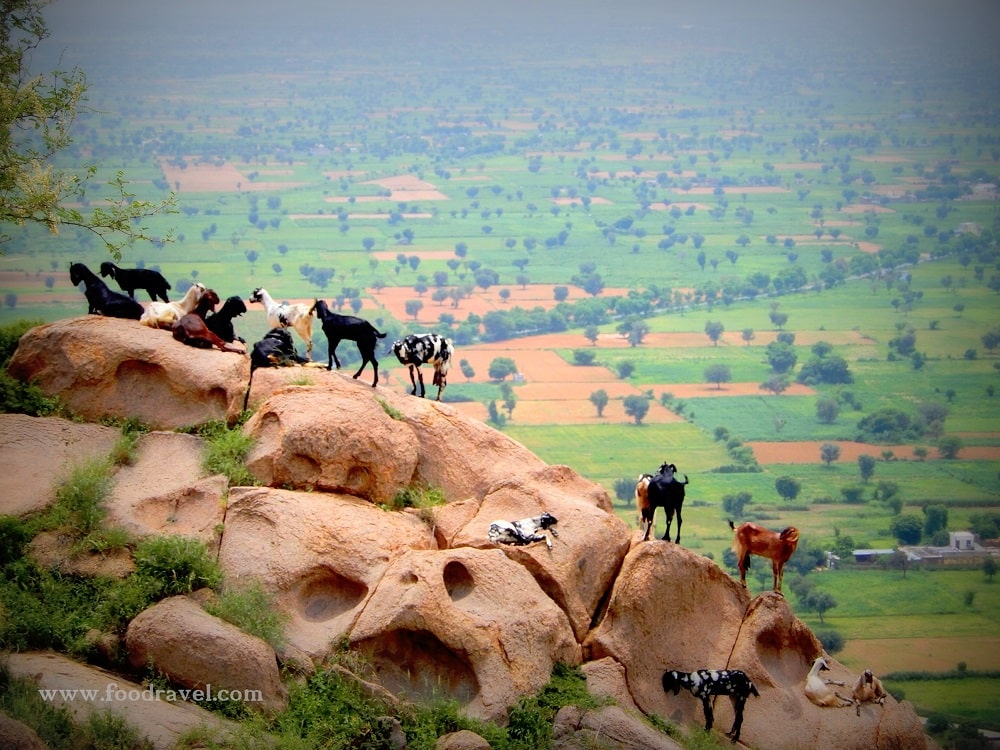


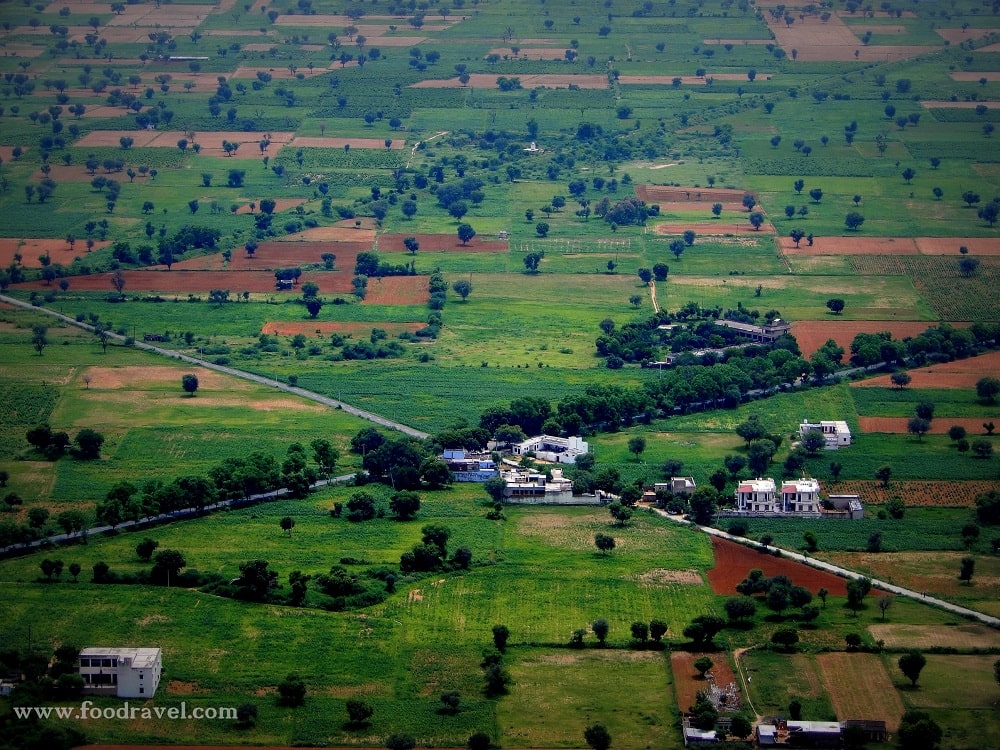
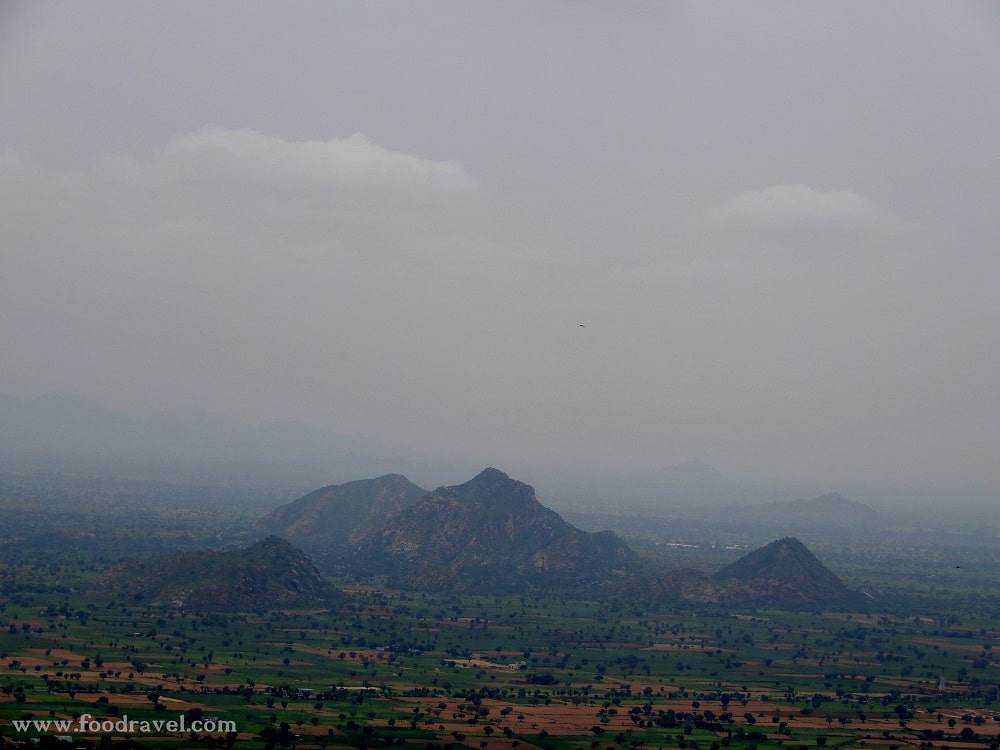





Once you arrive in Narnaul, autorickshaws are easily available near Hero Honda Chowk to take you to Dhosi village. The ride usually takes about twenty minutes. At Dhosi Hill, you will find serene serpentine stairs that lead up the hill, offering a peaceful and scenic climb. During my solo journey, I explored this area carrying a small bag with essentials such as my camera, power bank, facewash, chargers, and other necessary items.
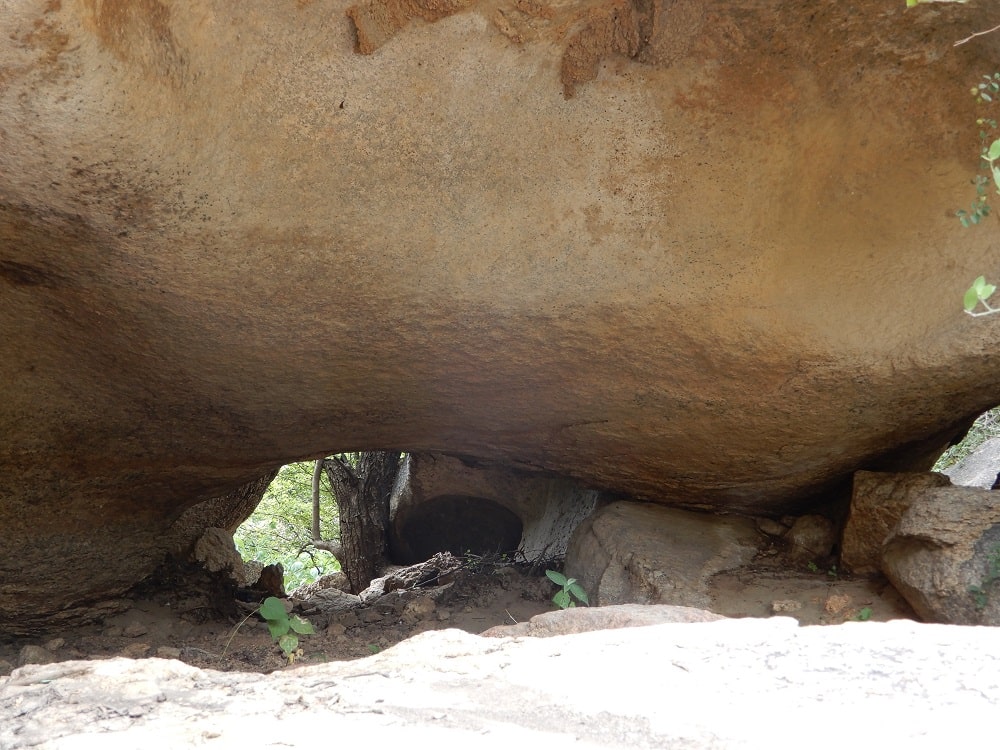
Here are some interesting facts about Dhosi Hill:
Dhosi Hill is one of the seven volcanoes in India and is an extinct volcano.
It is part of the Aravali Range and belongs to the Precambrian Malani igneous rock suite.
The hill is located at an elevation of about 1,170 meters (approximately 3,839 feet) above the surrounding terrain, and around 900 feet above sea level (these figures can vary depending on reference points).
The volcanic activity at Dhosi Hill dates back to about 732 million years before present (Ma BP).
Remnants of the ancient lava flows and the volcanic crater can still be seen on the hill.
A historic fort built by Hemu stands on the hill, adding to its historical significance.
The area is rich in biodiversity, hosting several medicinal plants, forests, caves, wild animals, and temples.
Dhosi Hill holds cultural and religious importance, as it is traditionally believed that the ancient sage Chyavan Rishi lived here.
Legend also says that the Pandavas visited the hill during their exile period.
Dhosi Hill is thus a remarkable geological, historical, cultural, and ecological site that combines India’s ancient volcanic past with rich heritage and natural beauty.
Not only does this place have great historic significance, but it also holds deep religious importance. There are very old temples here, and every year, the temples organize fairs that attract devotees from far and wide. The site also hosts mass feasts (Bhandara) for the worshippers. Many of these temples date back several hundred years.




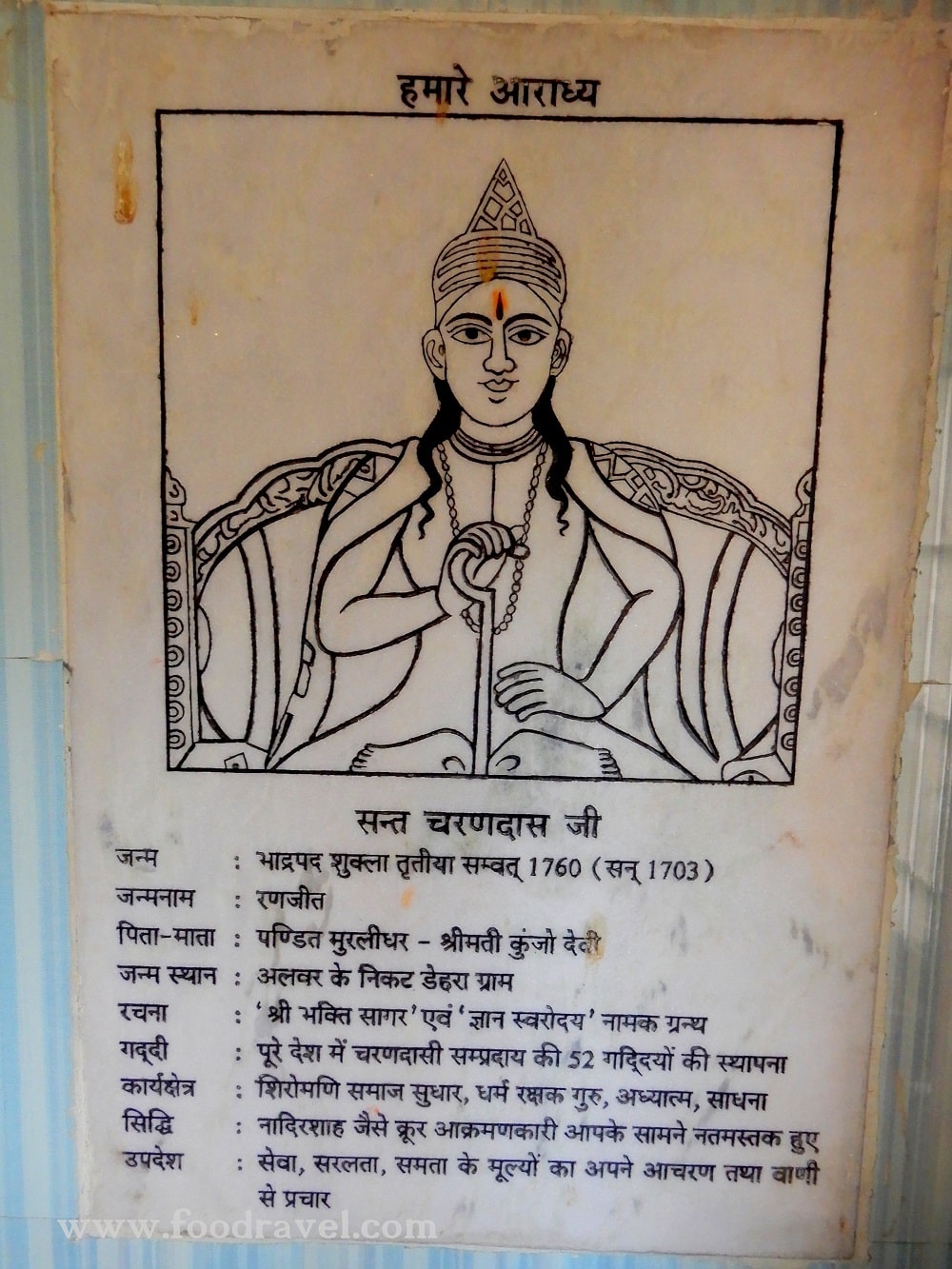



Dhosi Hill: Where Chyavanprash Was First Created
Chyavanprash is a well-known Ayurvedic herbal formulation commonly consumed in India, especially during winters, for its reputed benefits in boosting immunity and strengthening the body. Traditionally, it is believed to have originated at Dhosi Hill, a site of great historical and spiritual significance.
According to legend, Chyavan Rishi, a saint who lived and meditated at Dhosi Hill, spent several hundred years in deep meditation. Over time, his body supposedly became wood-like, with only his eyes visible and covered by plants and termites. One day, the king’s daughter, Sukanya, came with her friends and noticed the strange sight. When she struck the tree branches covering his eyes, causing his eyes to bleed, Chyavan Rishi became angry and cursed the king.
The king then pleaded for forgiveness, and Chyavan Rishi agreed on the condition that his daughter marry him. Sukanya married the rishi and served him faithfully. Nearby, there is said to be a pond that still exists today. One day, the Ashvin brothers, royal physicians in Hindu mythology, appeared at the pond, pleased with Sukanya’s service. They healed Chyavan Rishi by taking a dip in the water together, restoring his eyesight and youth.
To aid his healing, they prepared the Ayurvedic formulation now known as Chyavanprash, named after Chyavan Rishi. This legendary origin connects Dhosi Hill not only to ancient spirituality but also to the timeless tradition of Ayurvedic wellness celebrated across India.





The Connection of Pandavas’ Exile with Dhosi Hill
According to local folklore, the Pandavas from the Indian epic Mahabharata are believed to have visited Dhosi Hill during their exile. Several unusual impressions on the rocks here are said to be their footprints. One particularly famous rock features a clear foot-shaped impression. Legend has it that Draupadi, the wife of the Pandavas, was thirsty during their stay, and Bheem, known for his immense strength, kicked the rock to release water. This story adds a mystical and cultural layer to the hill’s significance. Additionally, there are numerous other mysterious impressions and markings on the rocks that locals associate with the Pandavas and their time in exile.
However, while these tales are fascinating and enrich the cultural heritage of Dhosi Hill, the scientific explanation may be quite different. Considering that Dhosi Hill was once an active volcano millions of years ago, these impressions could be natural geological formations shaped by volcanic activity, erosion, or mineral deposits rather than literal footprints. Such volcanic rocks often have unique shapes and textures that can inspire myths and legends.
Whether these footprints are the mark of ancient heroes or nature’s artistry, they add to the allure and mystery of Dhosi Hill. These stories highlight how natural wonders become woven into cultural narratives, connecting people to their heritage and inspiring curiosity to explore further.
The impressions or footprints seen on rocks at volcanic sites like Dhosi Hill can be explained by several natural geological processes related to volcanic formation, erosion, and weathering, rather than being literal footprints.
Volcanic rocks form when molten rock, either magma below the surface or lava after eruption, cools and solidifies. This cooling can happen rapidly or slowly, leading to different textures and structures in the rock, such as glassy surfaces, crystalline layers, or porous vesicular formations created by escaping volcanic gases.
Over millions of years, these volcanic rocks undergo physical and chemical changes from exposure to the elements. Weathering and erosion, caused by wind, rain, temperature changes, and biological activity. These later gradually wear down the volcanic surfaces, shaping the rocks into a variety of unusual forms and textures. The rocks may crack, chip, or form depressions and cavities from mineral dissolution or fracturing. Such processes can create shapes and patterns that, while natural, resemble footprints, handprints, or other marks.
Additionally, volcanic rocks often have variable hardness and fracture patterns, which can lead to irregular surface features. Gas bubbles trapped during solidification, mineral veins filling cracks, and pressure-induced fractures can produce shapes that to the human eye look like impressions or foot-like marks. These are examples of “petrosomatoglyphs,” natural rock formations that resemble body parts and have often inspired folklore or myths.
So, the “footprints” on Dhosi Hill’s rocks are likely formed by a combination of volcanic processes such as lava flow cooling structure and the long-term surface erosion and weathering that sculpt the volcanic rock into unusual patterns. These natural geological processes can create convincing shapes that are sometimes interpreted as ancient footprints or other impressions in rock.

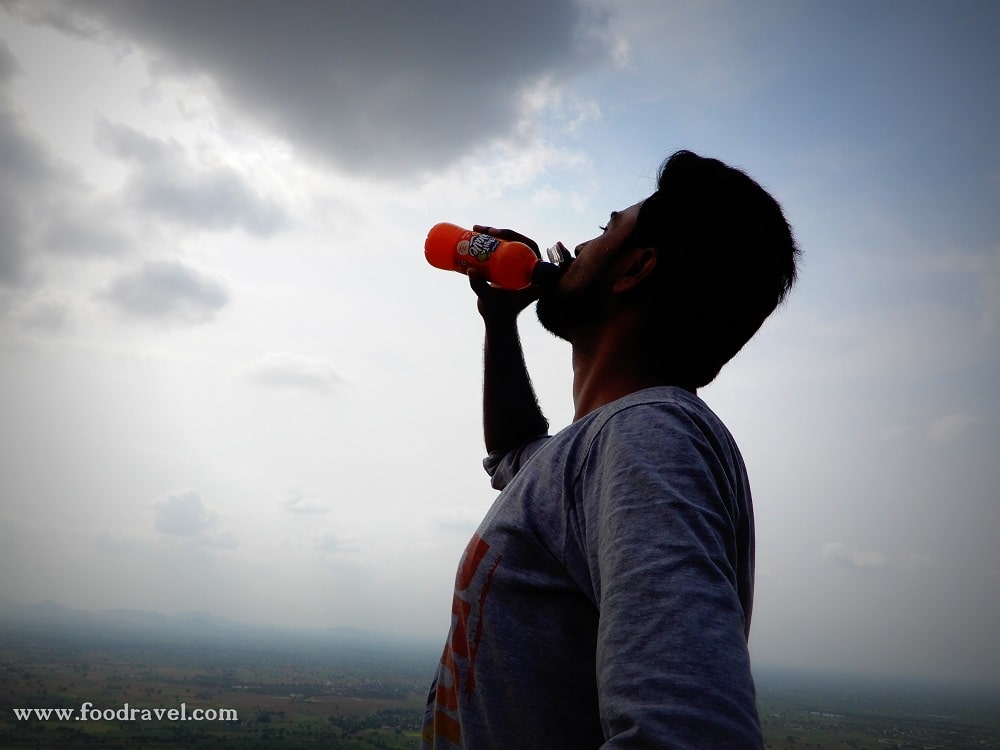
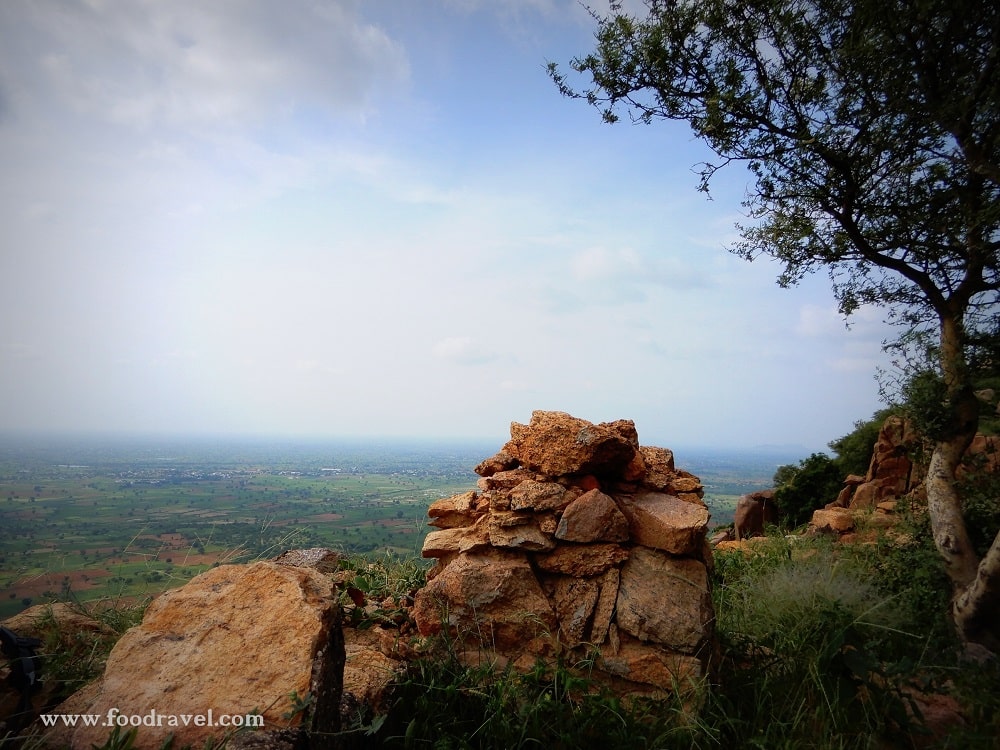


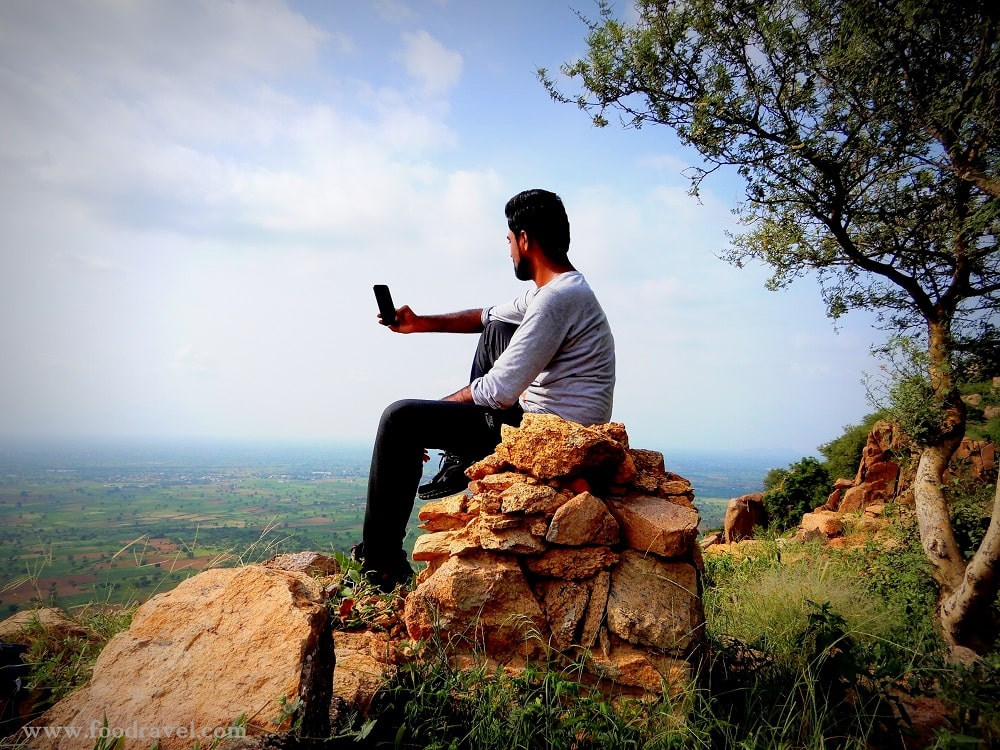
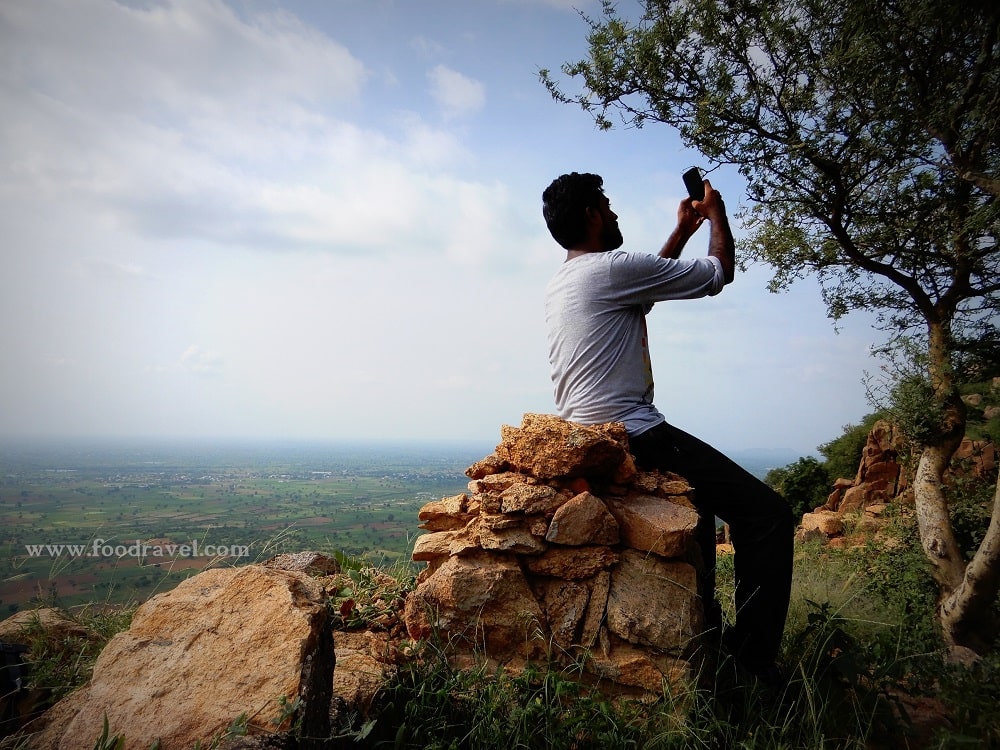

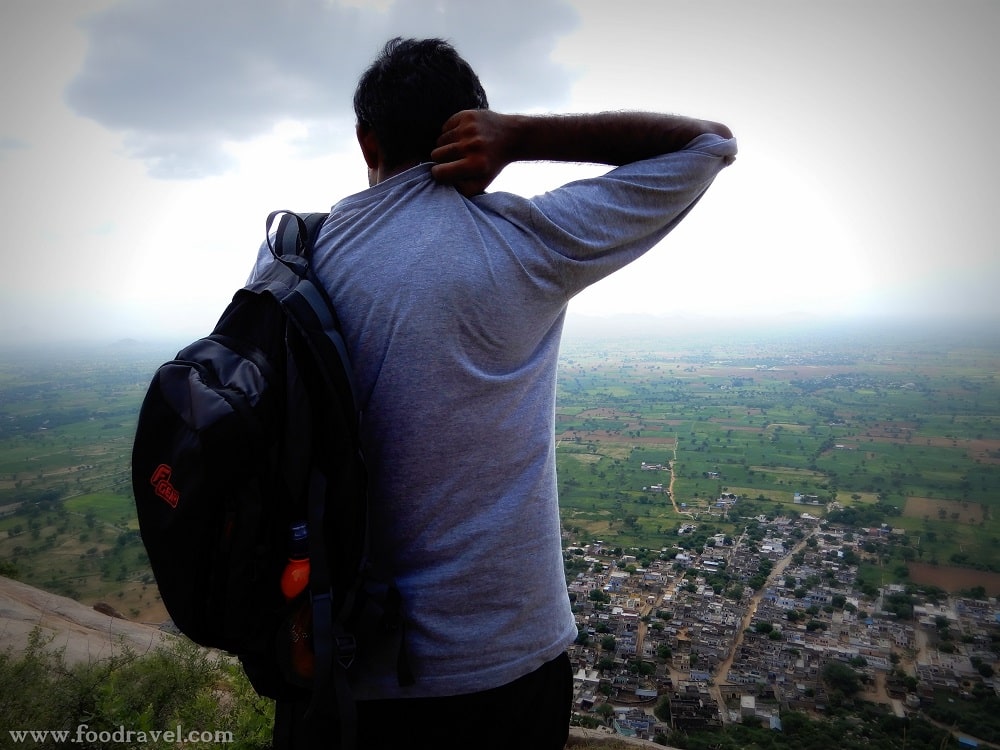
Dhosi Hill’s Unique Ecosystem: Nature, Wildlife, and More
Dhosi Hill rises to about 1,130 meters, standing as a unique natural ecosystem that blends geography, ecology, and biodiversity. Its forested slopes are characteristic of the semi-arid Aravalli range, where rocky terrain and volcanic soil support a variety of adapted life forms.
The geography of Dhosi Hill shapes its ecosystem significantly. Its elevation and rocky volcanic base create a microclimate with temperature and moisture conditions differing from the surrounding plains. This allows specialized plants and animals to thrive. The soil, formed from the weathering of ancient volcanic rocks, is mineral-rich but well-drained, favoring hardy vegetation.
Ecologically, the hill supports a diverse forest habitat. This forest is home to several wild animals like wolves and smaller mammals such as hedgehogs, which are adapted to the terrain. Reptiles including snakes, jarakh lizards, scorpions, and centipedes are common, many of which are venomous and play important roles in controlling insect and rodent populations. The presence of these species indicates a balanced trophic structure typical of such dry, rocky environments.
The flora includes many medicinal plants native to the region, thriving on the nutrient-specific volcanic soil. These plants have evolved to survive with limited water and strong sunlight exposure, often developing unique chemical compounds that make them valuable for traditional medicine. Local knowledge, such as that passed down by Baba Ramdev, highlights the importance of this botanical diversity.
Together, the geography and volcanic origin of Dhosi Hill create an ecological niche where flora and fauna have adapted to survive and coexist. This makes the hill not just a geological landmark but a living ecosystem with significant scientific and cultural value. Its combination of volcanic soil, elevation, and forest cover supports biodiversity that reflects the resilience and complexity of nature in this part of India.

Tracing Ancient Volcanic Activity at Dhosi Hill
This place is an extinct volcano and was once active. There are volcanic impressions, and it is clearly visible that lava and other volcanic eruption materials came out here. The slopes around the hill were formed as a direct result of volcanic activity, shaping the landscape with layers of hardened lava and ash deposits. These slopes reveal the violent geological past and tell the story of the intense volcanic processes that took place millions of years ago.
Natural caves carved into the volcanic rock add another intriguing feature. These caves were likely created by the cooling and contraction of lava flows or by the gradual erosion of softer volcanic ash layers. Exploring them gives a glimpse into the ancient subterranean structures formed during volcanic activity.
The large stones scattered across the hill are particularly fascinating. Their placement appears so precise and bewildering that it’s difficult to believe they are natural formations. These rocks, some of which weigh several tons, are remnants of solidified lava and volcanic bombs thrown out during eruptions. Over time, they have settled and adjusted into stable positions, forming unique patterns and arrangements that continue to mystify visitors.
Together, these elements, the volcanic slopes, natural caves, and the astonishingly arranged giant stones, compose a geological canvas that showcases the power and beauty of ancient volcanic activity at Dhosi Hill. The site stands as a rare and tangible record of Earth’s dynamic volcanic history, inviting exploration and awe.

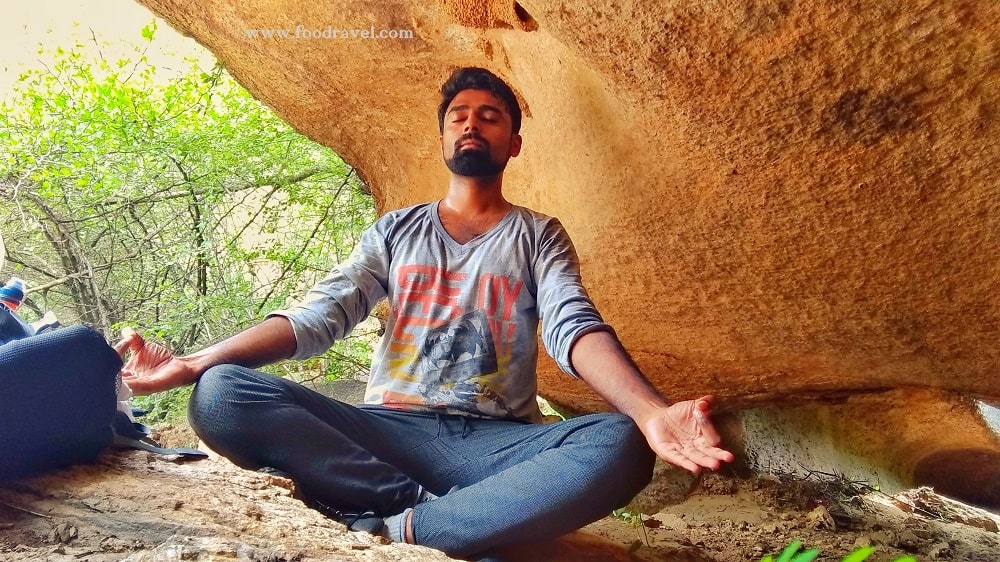
Dhosi Hill Through the Ages: From Vedic Times to Medieval Forts
Dhosi Hill holds a rich and layered historical context rooted in ancient, medieval, and cultural significance.
The area around Dhosi Hill was part of the ancient Vedic state of Brahmavarta and has connections to early Hindu scripture and sages. The Vedic sage Chyavana, associated with the creation of the famous Ayurvedic formulation Chyawanprash, is believed to have lived here. The hill and its surroundings are mentioned in Indian epics such as the Mahabharata, where the Pandavas are said to have visited during their exile.
During the medieval period, the native Rathore Rajputs ruled this region. In 1137 CE, the Rathore Rajputs famously defeated the foreign Muslim invader Hazrat Turkman (Shah Wilayat). Following this, a fort was constructed on Dhosi Hill by King Nun Karan of Luni, though it was later destroyed during attacks. Subsequently, Yadava King Rao Ganga Singh Nuniwal rebuilt a fort at this site. This fort had massive walls approximately 25 feet high and 40 feet thick, even on the steep volcanic slopes, designed to protect the hill’s heritage and sacred sites from frequent invasions.
Around 500 years ago, the fort was expanded or rebuilt by Hemu (also known as Hemchandra Vikramaditya), a notable 16th-century king and general during the Suri dynasty era. Hemu’s fortifications provided strong defense against Mughal and other Muslim invasions. Ruins of this fort still survive on Dhosi Hill today.
In the late 19th century, the Bhargava community (also called Dhusar Brahmins, who trace their lineage to sage Bhrigu and Chyavana Rishi) constructed a new fort-like structure modeled on the Chyavana temple at the crater of Dhosi Hill. This replaced an older temple, reflecting the hill’s religious importance and the community’s reverence for their ancestral heritage.
Additionally, links to the Rao rulers of Bikaner appear historically in the broader region’s control and conflict patterns. Notably, Rao Ganga Singh Nuniwal, connected to the Rathore lineage, is credited with building the rebuilt fort after earlier destruction. The Rathore rulers of Bikaner, such as Rao Bika and Rao Lunakaran in the 15th and early 16th centuries, were powerful regional players involved in battles around neighboring areas including Narnaul, near Dhosi Hill.
Thus, Dhosi Hill’s history spans from Vedic times through medieval Rajput resistance and defense to later community efforts to preserve its heritage. The hill’s fort, temples, and remains stand as testament to its role as a strategic, cultural, and spiritual center over centuries.

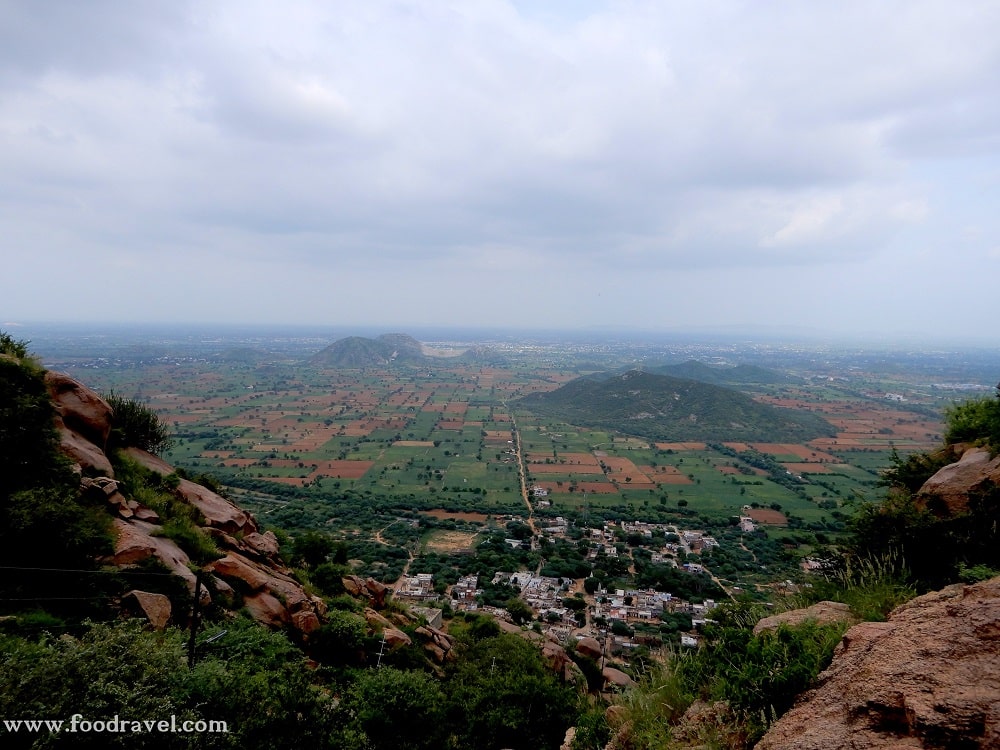
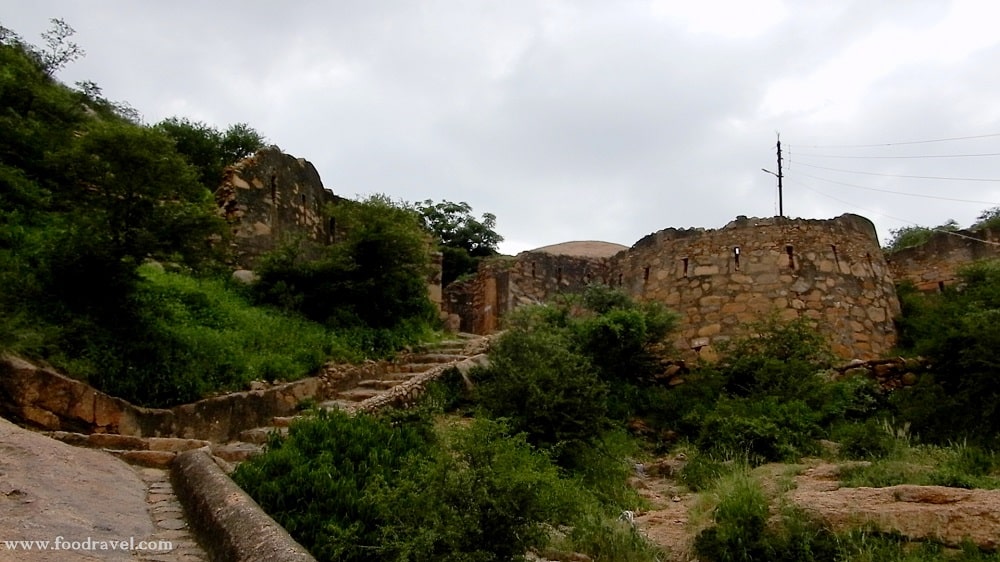


The Story of the Sarovar (Water Reservoir): Rainwater, Tradition, and Conservation at Dhosi Hill
The water reservoir, or Sarovar, at the summit of Dhosi Hill is a centuries-old structure integral to the hill’s heritage and ecology. It collects and stores rainwater flowing into the crater, maintaining a steady supply for pilgrims and visitors. The water in this reservoir is renowned locally for its herbal and medicinal qualities, particularly beneficial for treating skin problems. This is attributed to the presence of copper in the hill’s volcanic rocks, which enriches the water, making it cupric—copper-infused water known for its antimicrobial and healing properties. Scientific research supports copper’s role in killing harmful bacteria and promoting skin health, which aligns with the traditional beliefs about the Sarovar’s curative effects.
In 1944, during the British period, the Birla family from nearby Pilani, led by G. D. Birla, constructed a concrete dam to increase the reservoir’s storage capacity. This act was done as a memorial to their father, Raja Baldev Rai Birla, demonstrating their commitment to preserving the site’s religious and cultural significance. A plaque on the dam notes that the reservoir was intended for use by pilgrims of all faiths and castes, indicating its inclusive religious importance.
Over time, as the reservoir accumulated silt, it required maintenance to preserve its capacity and water quality. In 2003, the Indian National Trust for Art and Cultural Heritage (INTACH), a Haryana and Delhi-based NGO dedicated to heritage conservation, undertook a desilting project to restore the Sarovar. This effort was crucial in maintaining the reservoir as a functional and sacred water source.
The reservoir is complemented by a well on the hilltop, recharged naturally by the seepage and percolation of water from adjoining rainwater-fed tanks. Today, the Government of Haryana also provides drinking water through mechanical means from the hill’s base, ensuring a continuous supply for visitors.
Together, the Sarovar and its associated water management structures reflect a blend of natural geological features, traditional beliefs, and modern conservation efforts. They underscore Dhosi Hill’s importance not only as an ancient extinct volcano and cultural site but also as a living ecosystem sustaining both spirituality and life.



Important Things to Keep in Mind Before Trekking Dhosi Hill
Trekking up Dhosi Hill is an adventure that blends nature, history, and a touch of mystery. Before you lace up your shoes and hit the trail, here are some must-know tips to help you enjoy every moment safely and respectfully.
Dress the Part: The terrain here is rocky and uneven, so sturdy footwear is a must. Think hiking boots or sneakers with good grip to keep you steady on your feet.
Stay Hydrated: It’s a climb up to around 1,130 meters, and the sun can get intense. Carry plenty of water to keep yourself refreshed and energized.
Protect Yourself from the Elements: Sunscreen, a hat, and sunglasses are your best friends on this trek. Don’t forget insect repellent to keep those pesky bugs at bay.
Pack Smart: There aren’t many food stalls around, so bring along some light snacks or energy bars. You’ll thank yourself when you need a quick boost.
Watch Your Step: The wildlife here is fascinating but can be dangerous. Keep an eye out for snakes, scorpions, and other reptiles. Stick to the marked paths and tread carefully.
Respect the Land: This isn’t just a hill; it’s a living ecosystem and a sacred space. Avoid disturbing plants or animals, especially the prized medicinal herbs. Take your trash with you to keep the area pristine.
Beat the Heat: Plan your trek early morning or late afternoon to avoid the midday sun. You’ll enjoy cooler temperatures and perhaps even a breathtaking sunrise or sunset.
Learn as You Go: Hiring a local guide is a fantastic way to uncover the rich stories woven into the rocks, the ruins, and the forest. Their insights turn a simple hike into a journey through time and nature.
Be Prepared: Carry a small first-aid kit with basics like band-aids and antiseptic. Also, bring any personal medications you might need. Be prepared for wildlife encounters such as snakes, scorpions, and other reptiles live around the hill. So, stay on established paths and watch your step.
Check the Weather: Monsoons can make the trail slippery and hazardous, while the summer heat can be intense. Pick a day when the skies are clear for smooth trekking.
Tread Lightly on History: The ruins of old forts and temples are fragile. Climbing on these can damage centuries of heritage, so admire them with care.
Whether you’re a nature lover, history buff, or just looking for a refreshing escape, Dhosi Hill has something special waiting for you. Follow these tips, and your trek will be safe, fun, and unforgettable.
My Trekking Experience at Dhosi Hill: Essential Tips and Realities
Dhosi Hill, an extinct volcano near Rajasthan, experiences hot temperatures, making it less ideal to visit during summer. One crucial thing to remember is to carry enough water, as there is no water source along the entire route from the base to the summit. There are no shops on the trail, so you’ll need to bring everything you need or buy supplies before starting.
If you plan to explore everything the hill has to offer, it’s best to wear clothes and boots that fit well—not too loose and not too tight. The terrain includes spots where you may need to jump or climb, so sturdy footwear is essential. Also, carry food since there is nothing available on the way.
It takes roughly one hour to reach the top at a steady pace. Mobile network coverage is unreliable at the summit; for instance, Airtel had no signal when I was there. If you do not have your own vehicle, make sure to start descending by 4 PM since transport services stop early.
I spent nearly five hours on the hill. I brought two water bottles, and both emptied quickly due to the heat and exertion. My phone battery died before I started descending around 5:30 PM. I reached the base by 6 PM but faced difficulty finding transport back to Narnaul because services end by 5 PM.
I waited for a while and asked a nearby shopkeeper, who confirmed no services were available after 5 PM. I had to walk for some distance until a kind uncle on a bike gave me a lift partway home. Then another man on a bike helped me get closer to town. Finally, I hailed an autorickshaw, and the driver dropped me at the bus stand, where I arrived around 6:40 PM.
Takeaways from my experience: start early, carry plenty of water and snacks, be prepared for no phone network, and plan to come down before 4 PM if relying on public transport. And if you get stuck, don’t hesitate to ask locals—people are generally helpful and may offer a ride when you least expect it.
Unearthing Local Stories and Controversies at Dhosi Hill
On my way down from Dhosi Hill, I caught a lift from an uncle riding a bike whose home was along the route. As we traveled, he asked me about my profession and then shared something that instantly grabbed my attention—something few outsiders seem to know.
He explained that Dhosi Hill is not just a beautiful trekking spot but a major pilgrimage site for the Jaat community. What struck me most was his account of a tragic incident involving a priest who died in what was officially called an accident. However, according to local whispers, this was no accident. They believe it was carefully planned. There was another man present during the incident who survived and might hold the key to the real story, but details remain closely guarded.
The uncle also revealed that the land around Dhosi Hill has come under the control of the Baniya community. He claimed they are exploiting the site, and that this takeover was part of a deliberate effort to seize ownership of the entire area.
I have no way to confirm the truth of these stories, but the uncle spoke with such certainty and urgency that it felt important to share. He urged me to bring this to light because many people remain unaware of the complex and darker side of Dhosi Hill’s history.
These stories remind us that behind every sacred place lies layers of human drama, politics, and conflicting interests. While the hill continues to inspire reverence and wonder, it is also a place shaped by contested histories and unspoken truths.
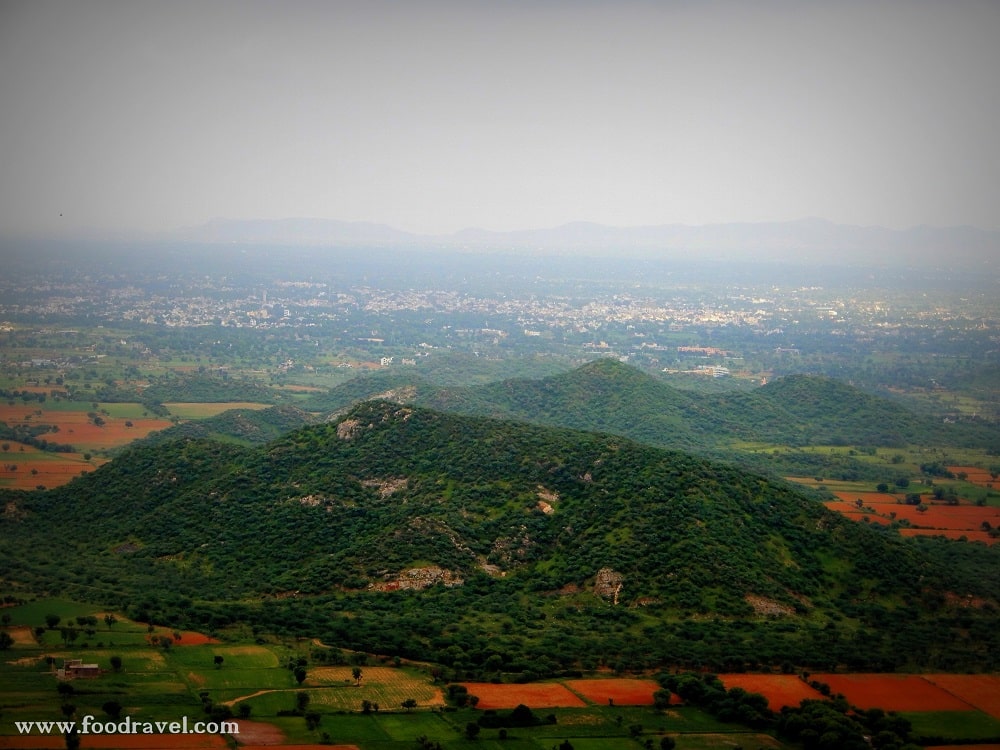
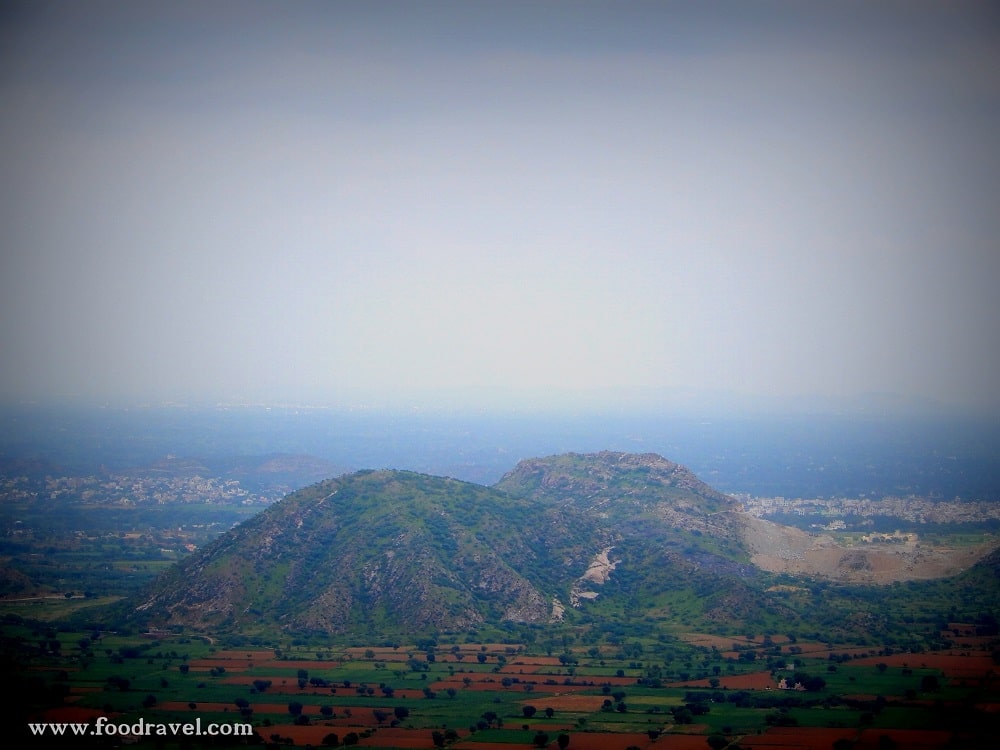

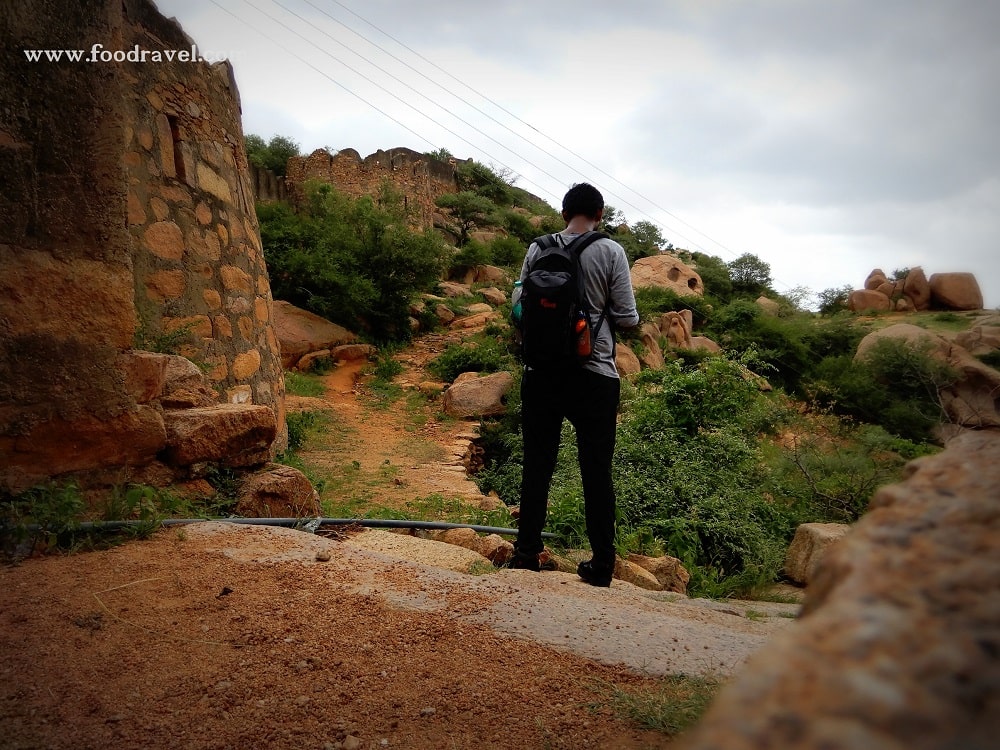





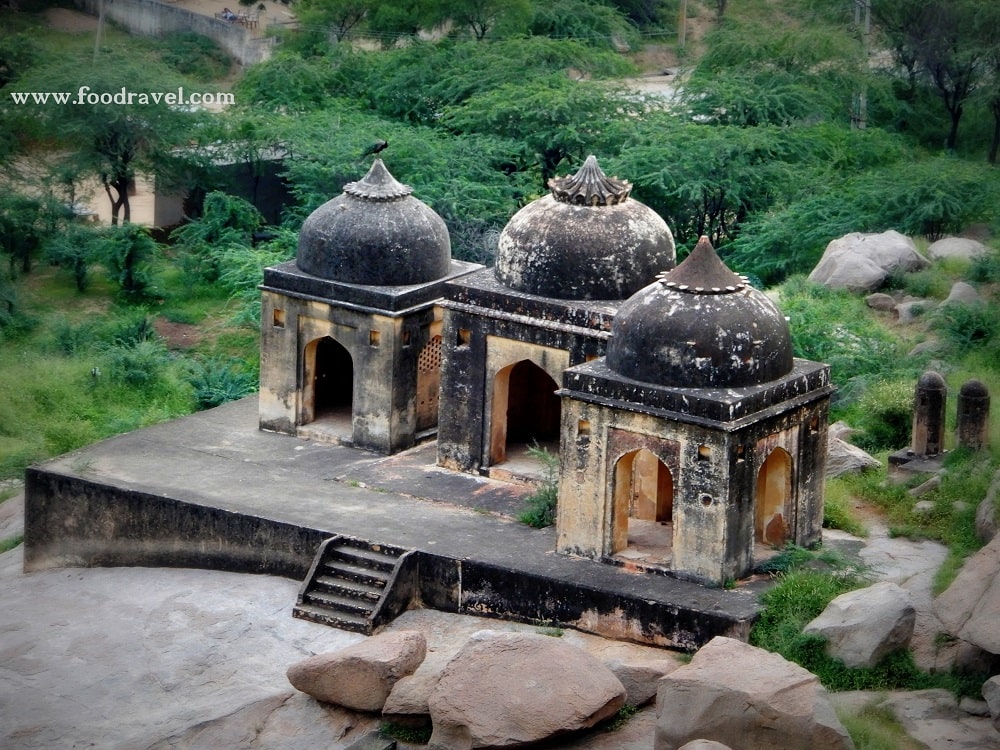



![]()


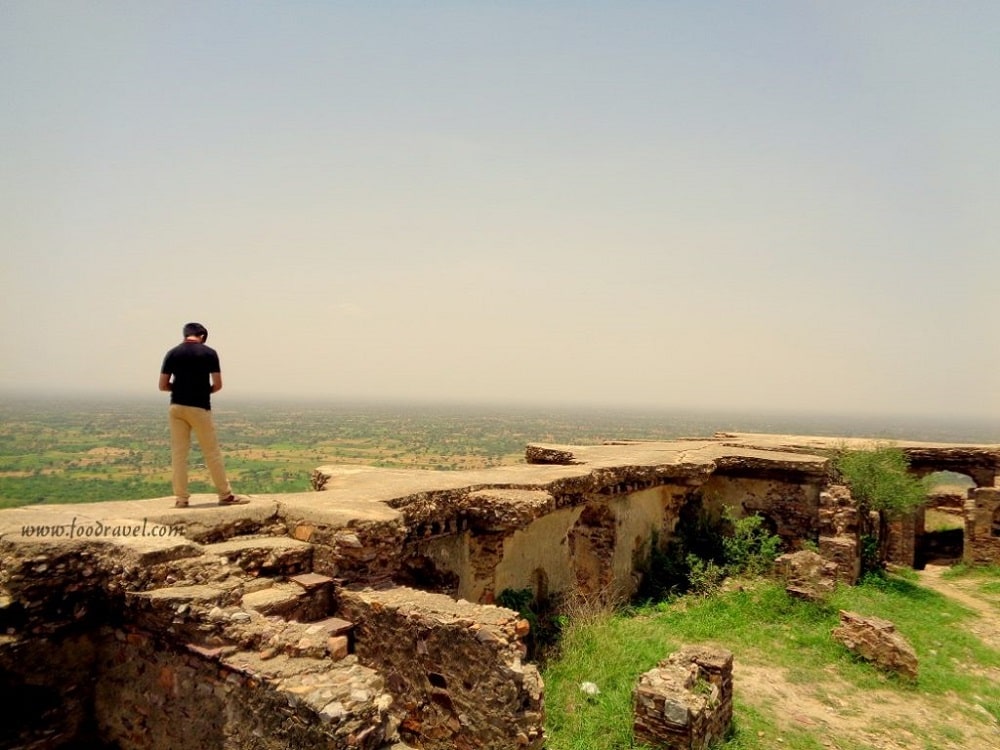

Wow such an off beat place and what detailed write up. Super impressed. Thanks for sharing
It indeed is an offbeat location. Try it. It’s different.
While growing up, i stayed for a few years in a place called Manendragarh in Chhattisgarh and everytime i told people where i say, they confused it with Mahendragarh… that is what life-long Mahendragarh memory is for me…. but I am sure some will be added after i finally visit the place.
There are tens of places in Mahendragarh. The Mahendragarh Fort, Madhogarh Fort. Then ancient sites in Narnaul including Shah Quli Tomb, Jal Mahal, Chor Gumbad, Dhosi Hill, and the list is long.
Funny memories you have…
Wow! Had not heard about this place, lovely to know about it. Also loved the way you depicted all the nitty gritty of your trip.
This place is a geological gem. If you are in Delhi, you can plan a day out.
Dhosi Hill looks so pretty and a must visit.. Quite a beauty and love the detailing of the blog
It’s a nice place to visit. Plus, Narnaul just doesn’t have Dhosi Hills, you can also visit Jal Mahal, Chor Gumbad, Tripolia Gate, Birbal Ka Chhata, Tomb of Pir Turkman, Tomb of Shah Wilayat, etc.
Never heard about this place earlier. Quite informative and descriptive. Thanks for enhancing our knowledge about this heritage.
This is an interesting place for sure.
Thank you, Priyanka, for stopping by…
Even I was unaware that we have volcanos in India, a well-written article and so informative. I hope you know that Reunion Island is built due to the volcano. It is a major attraction over there.
This place isn’t known to many people. Only those who are into geology. Have heard about Reunion island.
Thanks for stopping by…
Oh wow I had never heard of Dhosi Hill before. I am always on the look out for these unheard and off beat places, will definitely add this to my list. Thanks for this post, I will bookmark it.
Its a gem of geology. Google it to know more.
Thanks for your kind words and thanks for stopping by…
Never heard about this place, lovely to know about it. I am always on the lookout for these offbeat places, will definitely add this to my bucket list.
Let me know if you plan to visit, I can help you out with things and information.
Thanks for stopping by…
Dhosi Hill is indeed a hidden gem of India. Fascinated to read this post. Never knew about it being the site of an extinct volcano. The views from the hill are spectacular, but what was particularly interesting was that the place is where Chyavanprash originated. The temple dedicated to Rishi Chyavan looks intriguing.
Yes, this place is truly a gem. Not many people know about it.
To know more about such places, keep in touch. Thanks for stopping by…
A ton of information here. I didn’t know about the volcanoes in our country. Nor did I know the origination of Chawan Prash. Damn, this was one heck of a post. Thanks a ton for sharing this with us.
Thank you for such an elaborate blog on Dhosi Hills. And thanks for adding one more destination to our already overflowing bucket list. We’ll bookmark the blog and do expect a call from us when we finally plan to visit. We’ll need your guidance.
I appreciate your kind words Sundeep. This place isn’t much known to outsiders. Only locals who geology freaks know it.
Thanks for stopping by…
These pictures are absolutely breathtaking and awakens the traveller in me.
Thanks for your kind words and thanks for stopping by Heena.
This is one of the most interesting articles I’ve read in a LONG time! Thank you for sharing this piece of treasure with us – can’t wait to cherish it soon?
well said bro nice information providing by you
Thanks for stopping by…
Govt. Has to research on natural minerals or metals of this place, because volcanoes always gives natural resources to human beings.Is there any research or mining at this place before
There’s no mining at this place. I am not sure about research. Narnaul govt college provides Geology at UG and PG college, so maybe students from there come for some fieldwork, just to experience.
I don’t think government intervention to dig out metals and minerals is a right step since this place has religious and historical significance.
Thanks for stopping by Akash.
Hi, what does Dhosi mean?
Hi David, I am not sure if there is a literal meaning of the name.
What an intriguing read! Dhosi Hill’s unique history as an extinct volcano and its rich cultural significance make it a truly hidden gem. I never knew so much about this place before. Can’t wait to explore it myself! Thank you for shedding light on this forgotten treasure!
Hi dear
Thank you so much for your kind words! I’m thrilled to hear that you found the information about Dhosi Hill intriguing. It’s one of those places that doesn’t get as much attention, but its unique history and cultural significance definitely make it a hidden gem worth exploring. I’m glad I could introduce you to this forgotten treasure! I hope you have an amazing time if you decide to visit—it’s a place that’s sure to leave you with lasting memories. Feel free to reach out if you need any more tips or info! Safe travels! 🌿✨
What an intriguing post! I had no idea about Dhosi Hill’s volcanic history and its significance. The blend of natural beauty and archaeological wonder makes it a must-visit. I appreciate the detailed insights on the local myths and history. Looking forward to exploring this hidden gem!
Hey there!
Thanks for your amazing words.
Enjoy exploring.
What an intriguing post! Dhosi Hill seems like a hidden gem with its fascinating volcanic history and rich natural beauty. I never knew such a treasure existed so close to Narnaul. Can’t wait to explore the trails and learn more about the local flora and fauna! Thank you for shedding light on this amazing spot!
What a fascinating read! I had no idea about Dhosi Hill’s volcanic origins and its historical significance. The blend of natural beauty and ancient stories makes it such a unique destination. I can’t wait to explore it myself!
What an intriguing exploration of Dhosi Hill! It’s fascinating to learn about its volcanic origins and the rich history surrounding it. I had no idea such a treasure existed in Narnaul! The blend of nature and history makes it a perfect destination for those looking to delve deeper into our planet’s past. Thank you for shedding light on this forgotten gem!